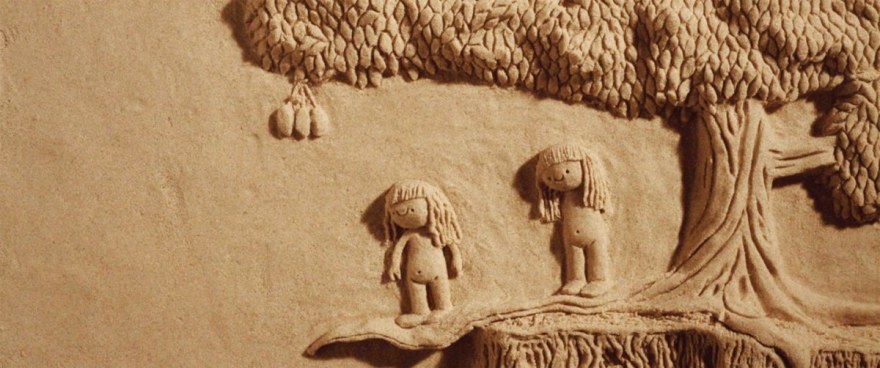Dinner with Guaxuma
Interview with Nara Normande, director of Guaxuma
Sand is a reference to your childhood on the beach, but we can imagine that it’s also a way to evoke many other things. What effects, what impressions did you want to elicit in the viewer through this technique?
Sand is a very malleable material that can take many shapes, and which can change and transform with time, a bit like our dreams and our memories. Working with the sand at Guaxuma allowed me to have very different images in the film, but with the connection of the material between them. It is a metaphor for time which applies well to the film.
Your short film evokes a very personal experience, but it elicits a strong sense of identification in the viewer. How do you explain that?
I think that speaking of universal subjects, like childhood, friendship, death, with a very personal connection as is the case in Guaxuma, allows the viewer to have a connection to my story and transfer it to their own memories and experiences. In Guaxuma, I wasn’t afraid to expose my life and I chose to instil my own voice, which I think makes the film even more sincere.
You use different animation techniques in Guaxuma. By overlapping these different materials, did you want to make the film more abstract and blur the lines of time?
I wanted to work with different techniques to try to elicit in the viewer the same feelings that I had with my memories and dreams of Guaxuma. There are moments when my memories are quite clear, like in the snow scene where I remember the snowflakes that fell from the leaves. For that scene, we worked with a very fine sand and the drawing is very detailed. Other times, they are more abstract, like the scene with the coloured sand on a black background that precedes Tayra’s death, where I wanted to evoke the feelings that I had when I thought about her accident.
Technically, how did the coproduction between France and Brazil work? Was is an asset to work between these two countries, or was it a source of complications?
The coproduction worked very well. I was able to work with incredible professionals in two countries, people I admire and who I trust. The time differences were a bit complicated because I had to do a double day of work. The most intense period was when I spent a month in Brazil to shoot the marionette scenes on the beach, while the animators were in the studio in Paris and there was still Normand Roger who was doing the sound effects in Canada. It was a lot of juggling to communicate with all of the team!
More generally, do you think that art can help the artist or the viewer to deal with absence and help with the grieving process?
Yes, certainly, art can help deal with absence and that was the case with Guaxuma – making this film helped me with the grieving process. I didn’t make this film for that reason alone because I already wanted to speak of my childhood on the beach at Guaxuma, but after Tayra’s death, the idea to make the film suddenly came back to me and I wrote the first draft of the script in 2011, one year after her death. Today, after the entire process of making the film, it’s definitely easier for me to talk about her absence.
Are there any particular freedoms that the short film format allows you?
For me, making a film is a way to conduct research and take the time to experiment. I had never worked with sand before Guaxumaand the challenge of learning new techniques to tell a story was very motivating. I have only made short films but I hope to continue to have the same freedoms I experienced when I make my feature-length films. In the short, there is less external pressure, fewer people involved and a smaller budget, thus it is naturally more simple to be free. But if I lose this freedom in making a feature-length film, then what is the point in changing format?
Guaxuma was shown in National Competition.








